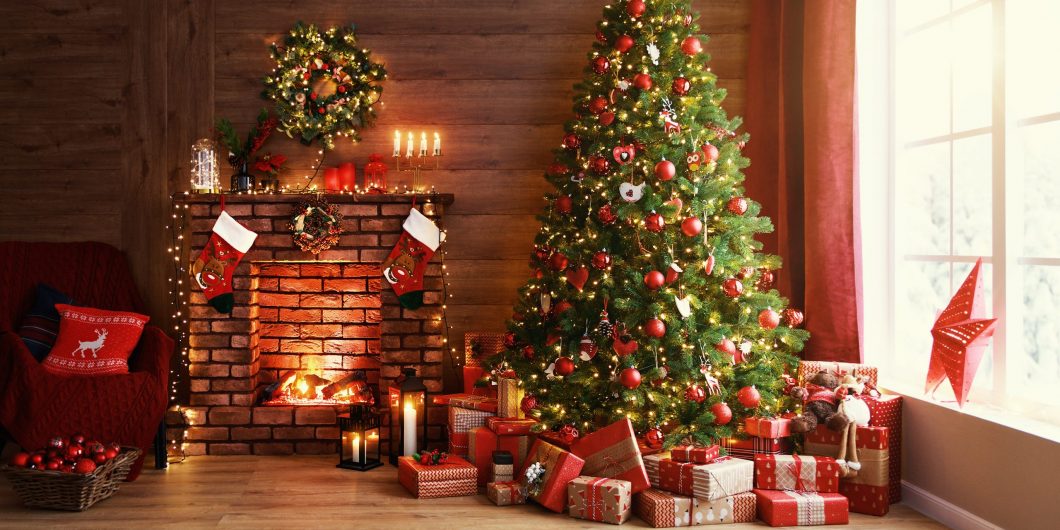When Jane Jacobs analyzed the great Chicago heat wave, she saw conditions were ripe for sliding into a cultural dead end.
Breathing Life into Holiday Traditions
The holiday season, the first with a sense of universal normality in the pandemic’s aftermath, is in full swing. Christians awaiting the annual celebration of their savior’s birth are shopping fervently, throwing Kris Kringle parties, wrapping gifts, trimming trees, and hanging lights in joyful anticipation.
It wouldn’t be unusual today to see a front lawn in which the Virgin Mary and the baby Jesus sit alongside inflatable Star Wars Christmas characters. And traditional religious hymns now share equal radio space with Jingle Bell Rock and Mariah Carey. Yet, alongside these modern takes on an ancient holiday, there’s a pervading sense that we should reevaluate how and why we celebrate Christmas.
Instead of the manic sharing of Amazon wish lists (is this how Santa now knows what little Johnny wants?) we could choose to embrace the sacred season as a time of community, renewal, and healing—a concept different from the already established “Keep Christ in Christmas” trope.
If we wish to shy away from or at least pause the current cult of American excess and materialism, a return to communal traditions might be in order. An essential aspect of Christmas, in the present or decades and even centuries past, is the communal routine and celebratory rituals that bind the celebrants together. Today, we may kiss under the mistletoe before toasting with spiked Pennsylvania Dutch eggnog, but that was not always the case.
The Beginning of Modern Traditions
Many, but not all, of the more well-known holiday traditions in America descended from the British Isles. Early American calendars often mimicked the religious seasons of the Christian calendar. Religious faiths and how those faiths impacted regional commemorations were deeply influenced by the practices and traditions of our ancestors.
American colonists from differing countries, sects, denominations, and even class systems brought their diverse and respective ethnic and religious traditions with them to the new world. These evolved to make up the varied ways in which Americans celebrate today. The mistletoe tradition is anchored in Greek and Norse mythology, but who can remember why? More recently, in the eighteenth century, it became part of Christmas festivities and office parties.
From the earliest days, American Christians attempted a form of reverence on Christmas Eve or Christmas day. Many sects, Catholics and Protestants alike, commonly came together at a communal location to share their faith in song and worship. Long before each immigrant ethnic group could build an individual church or hall to practice and celebrate their faith in their own language and customs, villages and towns came together in the spirit of Christmas.
Christmas celebrations also had a regional character. From Christmas Day until Twelfth Night or Epiphany in eastern Virginia, residents often hosted parties with dancing, drinking, church services, and dinners. However, Christmas was not celebrated in all of America. In Puritan New England, celebrating Christmas was punishable by law until the mid-seventeenth century. But by the early twentieth century, New Englanders had joined much of the rest of the country in practicing traditions that would not be unfamiliar to our grandparents, including Christmas trees and the exchange of modest gifts.
But despite the differences in how they choose to celebrate, Christian fellowship has historically been central to the holiday. Even today, some churches hold Christmas Eve caroling during the afternoon or on Christmas Day, but many don’t carol at all. While Christmas Eve midnight mass is popular in heavily Catholic populations like Boston, New York, and New Orleans, other Christian religions prefer a service in the morning. Some of these worship sessions are filled with music and pageantry; some are not.
The choice to share Christmas with people we care about and who care about us has newfound weight.
Secular Christmas
In recent decades, many have come to celebrate a secular Americanized variant of the holiday. For some, the Christian celebration has evolved and become more inclusive with both civic and secular celebrants. An Indian Muslim with whom I once worked celebrated Christmas with his family. He aspired to be an American and shared the holiday with his eight children, who were just as excited for the arrival of the tree each year as any other Christian family, not as a Christian holiday, but as an American one. Likewise, many American Jews also celebrate some variant of Christmas.
Central to the creation of the modern American Christmas experience is Saint Nicholas. His transformation into what became the Santa Claus we all know began in the eighteenth century. However, it was only in the nineteenth century and with the rise of department stores that his image became prominent in the minds of young children throughout the country. As many know, the mythos surrounding Santa is that children could expect gifts if they’d behaved during the year, while ill behavior would warrant a lack of toys or, even worse, a stocking filled with coal.
A day set aside to celebrate the birth of God’s only son somehow transposed into a jolly red velvet-suited man who, laden with toys, climbs down our chimneys on Christmas Eve. Again, it’s the disconnect that’s the problem. Do modern American children even know who Saint Nicholas was or how he’s related to Christmas? Or that the reason they hang their stockings by the chimney with care is because of a generous fourth-century Asia Minor bishop who gave secret gifts to the poor? Unlikely.
“A Visit From St. Nicholas” was first published in 1823, more popularly known as “‘Twas The Night Before Christmas.” This work is widely considered a blueprint of the modern take on Father Christmas. However, in the nineteenth century, Harper’s Weekly and later Coca-Cola inspired the visual image of the Santa we know today.
Christmas trees, another American staple, go up in millions of American homes each year. Large and small, real, or artificial, the centerpiece of the holiday celebration is the yuletide tree. The tradition was brought to America by German settlers and, later still, German immigrants. Gathered around the tree, gifts underneath, they would sit around their trees to trade presents and share Christmas day with one another, a custom that has shaped the American Christmas experience.
Eggnog is another American Christmas tradition imported from Europe or the British Isles. The beverage once consumed by none other than President George Washington himself is still popular today. The mixture of cream, egg yolks, and sugar delivers holiday cheer to Americans each year. If you’d like to emulate America’s Revolutionary War hero, he preferred a mixture of bourbon, rum, and sherry added to his cup.
Christmas in a Materialist Society
Other traditions are more modern. As consumer prosperity grew post World War II, so did our appetite for elaborate decorations, food, and material goods. Families moved apart in pursuit of the American Dream. By the dawn of the twenty-first century, the holiday had devolved into a consumer frenzy of anxiety and consumerism.
Christmas, for many, began to be something that many dreaded. Today, more often than not, Americans ask for expensive consumer goods that they themselves might struggle to afford. This consumerist mindset can be seen in Black Friday sales and leads to the creation of unnecessary debt. As a result, our Christmas traditions have changed, perhaps for the better, and in some ways, for the worst.
What was once a modest celebration, with gifts of handmade goods, a small toy for a child, and some fruit, had changed. For many Americans, the outlay of time, effort, and expenditure has no parallel. The season is often spent trying to compete in impressing friends, family, and at times, strangers with gifts, food, and decorations. Choosing a simple personal gift with thought and care, a sought-after book, favorite tin of candy, or a handmade item is more the spirit of Christmas, but is it still the norm? Many are left wondering if we’ve lost the true meaning and value of the day.
However, Christmas may have found its salvation through an unexpected crisis. The recent pandemic has given Americans a pause in our collective holiday insanity. Constrained by isolation, many individuals have a newfound appreciation for social interaction and a nostalgia for simpler times. This is mirrored in how we celebrate holidays. Connection has newfound importance in our lives. For many, slowing down and prioritizing relationships is more important than it used to be. Being home for Christmas means more after we’ve had the choice taken away from us.
Materialism, consumerism, and the mad rush of acquisition are still here, but gratitude for the choice to share Christmas with people we care about and who care about us has newfound weight. If we embrace this renewed appreciation, we have a host of communal traditions with deeper, often lost, meaning that we might rediscover together.



